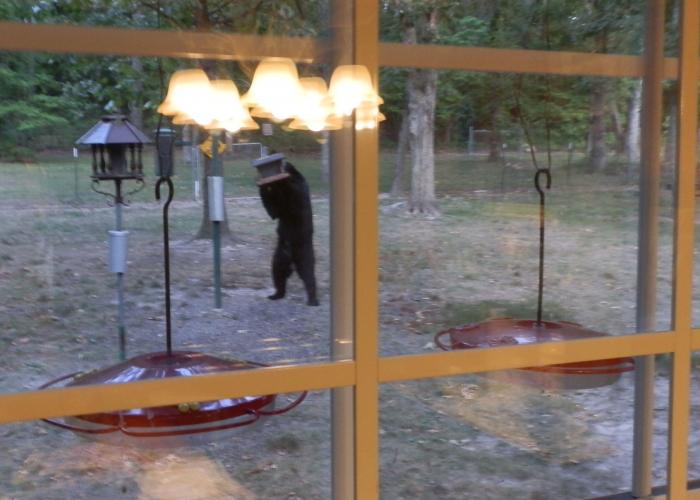
Xplor reconnects kids to nature and helps them find adventure in their own backyard. Free to residents of Missouri.


































Stay in Touch with MDC news, newsletters, events, and manage your subscription

Xplor reconnects kids to nature and helps them find adventure in their own backyard. Free to residents of Missouri.

A monthly publication about conservation in Missouri. Started in 1938, the printed magazine is free to residents of Missouri.


JEFFERSON CITY, Mo. – Most Missourians love wildlife — unless it gets a little too close to home. Need help keeping bats from roosting in the attic, deer from decimating the garden, Canada geese from greasing the lawn, raccoons from raiding trash cans, and other critter control? The Missouri Department of Conservation (MDC) offers online, call-in, and — when necessary — in-person help with controlling unwanted wildlife.
MDC Wildlife Damage Biologists Jim Braithwait and Daryl Damron emphasize that prevention is the best cure.
"The best way to deal with problem wildlife is to keep it from becoming a nuisance in the first place," Braithwait says. "They're like us. They need food, water, and shelter. Don't provide these three things, and they will find someplace else to live."
Don't feed wildlife.
"Feeding wildlife, even unintentionally, often ends with a problem situation that could have been avoided," Braithwait says. "If you leave out pet food or greasy grills, you should expect raccoons, opossums, and even bears (if there's a population nearby) to come to dinner. Don't put out stinky garbage before collection time, and don't feed birds during summer months. They have plenty of natural forage this time of year. Keeping birdfeeders full in summer can make nuisances of raccoons, squirrels, deer, bears, and other wildlife looking for easy pickings."
Protect small pets.
"Both urban and rural citizens should practice good pet stewardship by keeping small pets inside, or on a leash or within reach while outside," Damron says. "Because we build so much green space into our communities, even cities host populations of predators such as coyotes, foxes, bobcats, and birds of prey, which may attack small pets left unattended. Keeping small pets inside most of the time also prevents them from attacking and killing small, sometimes declining, wildlife such as reptiles and songbirds."
Don't invite wildlife to set up house.
"If you have brush, junk, or rock piles around your house, or if your roof has an opening, you will have mice, rats, skunks, groundhogs, bats, squirrels, raccoons, snakes, lizards, and other critters making themselves at home," Damron says. "Keep rock gardens and walls well maintained, and inspect your roof and eaves yearly. If people have woodpeckers hammering their siding, they're probably looking for insects. Call a pest-control contractor to eliminate the issue and the woodpeckers will find other places to forage."
Give wildlife time to move on.
"Some wildlife will go away on their own if you give them a chance," Braithwait says. "We get lots of complaints about foxes, especially in spring and summer. Just give them a month or two and they'll be gone because fox families disperse in the fall. Meanwhile, if you've got a problem with squirrels, you can count on foxes to set their numbers back a bit."
Get professional help if the problem is too big to handle.
"If you have a threatening situation, such as a coyote or a bear threatening livestock, pets, or family, call your local MDC office," Braithwait says. "Our wildlife-damage biologists can investigate and help you deal with the offending animal in a way that's legal, safe, and humane."
Consider hunting and trapping.
"If you've changed your habits, cleaned up your property, fixed the holes in your eaves — and you've still got problems — consider hunting or trapping or inviting hunters or trappers onto your land during specific hunting and trapping seasons," Damron says. "Even if you live in town, supporting or participating in urban deer hunting during the fall season can help reduce the number of deer nipping the buds off your roses every spring."
Get more information.
For more information on dealing with problem wildlife, visit the MDC website Nuisance Native Wildlife section at mdc.mo.gov/node/2573. Wildlife Control Guidelines provide an overview of regulations, permitted methods, and how to dispose of wildlife carcasses safely. Wildlife Control Sheets for various species show what works and what doesn't for wildlife most likely to become nuisances in Missouri.